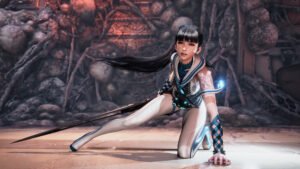It’s a tall order to build upon a titan of the medium like Final Fantasy VII. How do you update a title that has been near and dear to so many people’s hearts for over a quarter of a century, appealing to new audiences without alienating the old while not simply covering the original in next-gen paint? I’d almost think it impossible, yet Final Fantasy VII Rebirth seems to have found the best possible course to take in this endeavour.
It’s been about 25 years since I first played Final Fantasy VII. I still remember that feeling of awe when you leave Midgar and set foot on the overworld. You’re no longer confined to the smoggy streets below “that &^#$# ‘pizza'” (as Barret would put it); instead, vast open plains stretch out before you, and the world is your oyster.
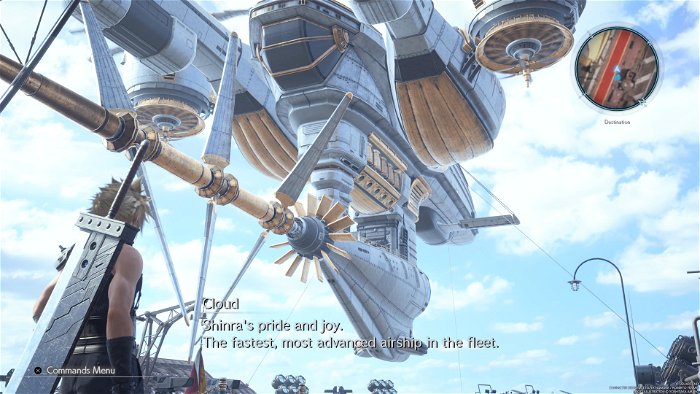
Taking those first steps in Final Fantasy VII Rebirth stirred a similar epiphany moment. Recognizing the general layout of the old, familiar map in a sprawling, modern-day open world and hearing those beloved characters’ banter as they made their way to their next destination was truly heartwarming.
It might’ve seemed impossible to live up to its namesake or even to follow in the impressive footsteps of its direct predecessor, but Square Enix has done just that and more with Final Fantasy VII Rebirth.
Narrative
(If you’re wary of spoilers, rest easy; the following discussion is spoiler-free.)
By and large, Final Fantasy VII Rebirth continues the same philosophy as Final Fantasy VII Remake: adapting the original game’s content for a modern audience. Sometimes, it sticks close to the source; at others, it strikes out in bold new directions. However, Rebirth has better discretion overall and benefits greatly from not being contained within Midgar.
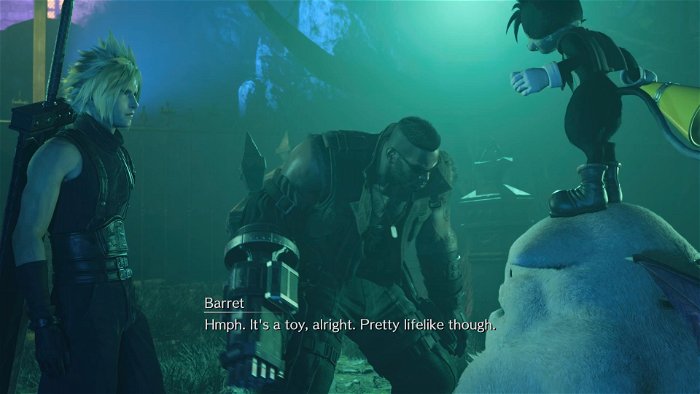
Following the events of the previous game, Cloud and company leave the corporate megacity behind and strike out in pursuit of Sephiroth. The journey takes our heroes across two continents, tangling with the evil Shinra Company, forces of nature, and the skeletons in their own closets along the way.
If you’ve played through at least the first disc of Final Fantasy VII at some point, you’ll likely have a general sense of what’s coming throughout Final Fantasy VII Rebirth—that is, until it turns your expectations on their head. As in Remake, Square Enix’s new epic heads to most of the same destinations but utilizes different routes and pit stops along the way. The result is neither a 1:1 remake nor an erasure of the original; you’ll recognize, “here’s the part where they fight a boss before they can get up to the next area,” but enough of the variables are changed in the process to make it new and worthwhile.
Generally speaking, I welcomed or at least enjoyed most of the deviations from the original game, having revisited it so many times before. Some elements of the original worked because of the janky, early-3D animation and the tricks Squaresoft utilized to pull off certain effects, but they might not fly with realistic modern graphics. Altering such instances was a wise call, if only for the variety.
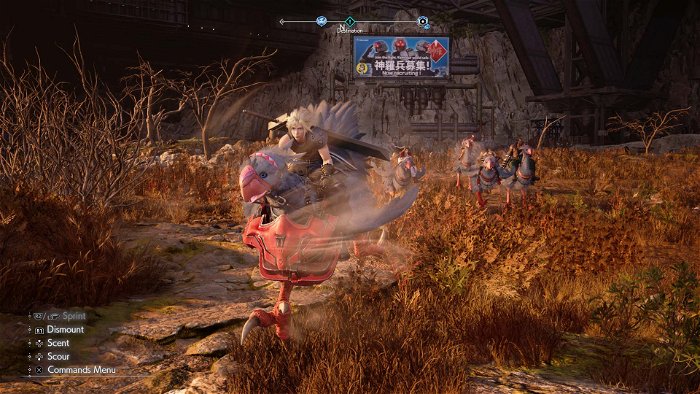
That’s not to say that Final Fantasy VII Rebirth erases the inherent goofiness of the original; in fact, at times, it leans even harder into that absurdity. Take, for instance, the infamous boat voyage across the sea from Junon to Costa Del Sol. In the original, Red XIII struggles to hide in a Shinra soldier’s uniform, but in Rebirth, he embraces the disguise instead in one of the game’s most hilarious cutscenes. The same goes for other bizarre locations like the Gold Saucer’s corny horror-themed hotel.
Of course, Final Fantasy VII Rebirth can also lean harder into the emotional side of the story with modern technology—and its excellent cast. Overall, I found the quality of the script and voice work improved from Remake‘s already high bar. If nothing else, I appreciate this trilogy for deepening the human element of the original game so profoundly. Between the emotive character models and the voices behind them, these familiar characters feel more human than ever before.
The scope of Final Fantasy VII Rebirth is massive, between the scale of its open-world and the amount of narrative it covers.
While practically every character has been deftly cast, John Eric Bentley and Suzie Yeung shine as Barret and Yuffie in particular. The Remake series has done wonders for everyone’s characterizations, but it’s the nuanced performances that truly broadened my appreciation for them. Meanwhile, Tyler Hoechlin continues to impress as Sephiroth and Matthew Mercer embodies Vincent—both sounding exactly as I’ve always imagined them.
Even though Final Fantasy VII has lived rent-free in my head for so long, I was riveted throughout Rebirth‘s story as familiar locations and bosses were recreated, and new wrinkles complicated the plot enough to make it worth the cost of admission. I once again have lingering questions about the metaphysical stakes of it all, which the third and supposedly final installment will hopefully answer, but there will be plenty of time to mull those over in the interim.
By and large, the narrative of Final Fantasy VII Rebirth manages to expand the characters and their motivations, and bridge the various installments of the larger Final Fantasy VII series in the process. What’s more, it does so without being heavy-handed about it. That’s quite a feat in itself, but luckily the game doesn’t stop at that.
Exploration
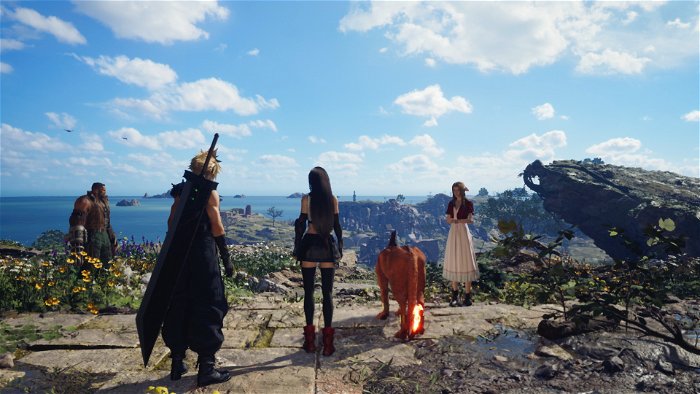
In a word, the scope of Final Fantasy VII Rebirth is massive, between the scale of its open world and the amount of narrative it covers. By the time the credits rolled, I had accumulated over 70 hours of completing the story and 50-70% of the “World Intel” side content.
Cloud and company traverse several different open-world fields across this leg of their journey, each representing a chunk of the original game’s world map, like the Grasslands east of Midgar or the region from the Mythril Mines to Junon. Instead of walking a chibi representation of Cloud across a scaled, nigh-abstract representation of the world, players get to tread every inch of the world on foot (or in various vehicles). There are about six of these distinct regions, each with their own set of side quests and smaller narratives.
These side quests cover the spectrum of fairly typical open-world tasks, like activating towers to reveal things on the map, locating hidden oases, or synchronizing with the guardian summon of each region. Summoned creatures are earned through the latter objectives—each region has three shrines to their resident summon (like the Phoenix in Junon), and visiting each both makes that summon easier to fight and improves their materia.
Even when it does invoke open-world conventions, Rebirth generally manages to keep the objectives fresh. Each of the towers, for instance, has a unique layout like a quick platforming puzzle, utilizing the expanded movement system. Activating them doesn’t simply plaster all of the region’s mysteries on your map, either; you might get a clue or two, but some activities are left to natural, holistic discovery, like the chocobo chicks luring you to rest stops, or the birds that lead the way to a nearby oasis of Lifestream energy.
Final Fantasy VII Rebirth also hid some quality easter eggs in each region’s “protorelic” questline, where our heroes undertake unique, themed challenges in order to obtain priceless relics. In Junon, these quests involve playing the Fort Condor minigame from Intermission, with a new twist. Longtime fans of the series should not sleep on this particular storyline.
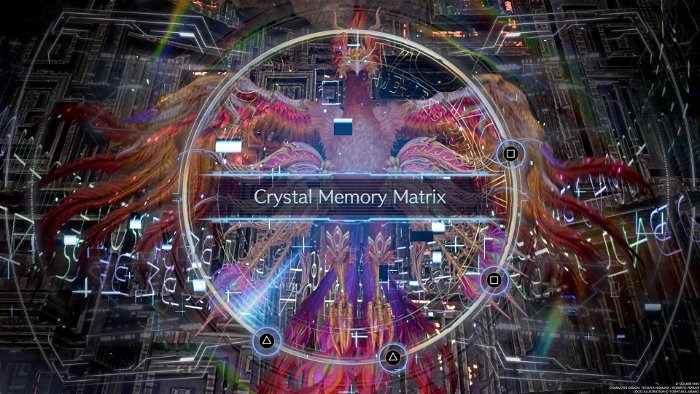
Despite how oversaturated open worlds are and how easy it is to feel fatigued from their conventions, I was cautiously optimistic about Square Enix’s chances in this department—and once again, Final Fantasy VII Rebirth impressed me. Its open fields are among the most holistic I’ve encountered, with fewer on-screen markers detracting from the landscape or other menus, and the more “busywork” objectives didn’t feel like busywork. I also had trepidations about the frequency of random encounters, which proved unfounded; there are enough monsters around to keep you on your toes without bogging you down in as many encounters as the original.
Fortunately, Final Fantasy VII Rebirth provides the tools to make each region diverse and accessible. The group can obtain a Chocobo for each area, typically with their own traversal gimmicks, and other means of conveyance open up in certain maps. Open-world tedium did begin to set in a little bit for me in Cosmo Canyon, with its convoluted trails and gliding puzzles, but I was thankfully rejuvenated in the next area.
What truly changes the tone and keeps Final Fantasy VII Rebirth fresh is its vast array of minigames and events. Whether in the field or in story events, the game throws interesting curveballs regularly, spicing up the routine. These diversions range from a new card game that might rival Final Fantasy VIII‘s minigame crown, to waterskiing with a dolphin’s help, to Fort Condor’s strategy twist, and so many others in between. (And that’s to say nothing of the Gold Saucer’s myriad attractions, either.)
There’s one weak link in this chain, and it’s the (thankfully small) smattering of stealth objectives in certain sidequests, like sneaking up on a Chocobo to unlock them for use in that region. The engine doesn’t lend itself readily to stealth maneuvers, so I was grateful when these segments proved short.
If not for deadlines and my general burning desire to see the full story through, I could easily have invested another 15-20 hours revisiting Final Fantasy VII Rebirth‘s regions and finishing the remaining 30-50% of optional challenges—and that’s just what I intend to do.
Combat

What made Final Fantasy VII Remake click so well for me was the compromise it struck with combat: you control a party of three and can issue commands to them when their ATB gauges fill, like the originals, but also move around the battlefield and attack freely. While I adore Final Fantasy XVI‘s full action-RPG approach, this is one of the best systems in the series’ 36-year history of constant evolution and change.
Final Fantasy VII Rebirth inherits this system and expands it in all the right directions. The principle is the same, with small tweaks like enhancing the standard dodge roll and adding a third level of Limit Breaks. The biggest of all is the new Synergy commands that allow certain pairs of characters to perform special team-up attacks and gain powerful boons. These fall into two categories: “skills” that can be used at will and “abilities” that require both people to use up several ATB bars first.
The returning cast members—Cloud, Barret, Tifa, and Aerith—play largely as you’d expect after Remake. This time they’re joined by three newcomers: Red XIII, available now as a proper teammate instead of an AI ally; Yuffie, now a team player after being the star of Intergrade‘s show; and Cait Sith, a wholly new figure in the Remake project’s battles. Each has received the same level of care in their transition to modern gameplay as the original four and feel both entirely distinct from the rest, and true to their character.
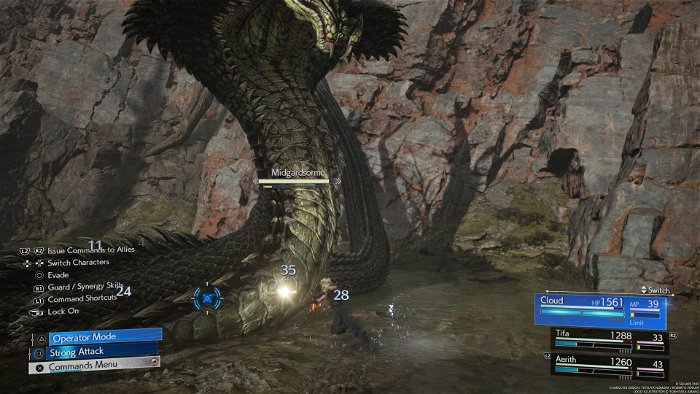
Cait Sith was one of the elements that I was most curious about way back when the remakes were announced. By so many standards, this goofy character shouldn’t feasibly work for a modern audience—he’s a remote-controlled cat who rides a robotic toy moogle, for crying out loud—and yet, Final Fantasy VII Rebirth makes him work so well in and out of battle. His bizarre skillset has been adapted into a wholly unique entity in the Remake engine, no longer glued to the Moogle robot, and crafty players should have a field day finding clever ways to utilize him. (I’d be happy if I never have to fight as him solo again in the third part, though.)
On the other side of its story, I’m floored by all I experienced within Final Fantasy VII Rebirth.
Final Fantasy VII Rebirth rolls back the clock on the party’s abilities, whether you have platinum Remake save data on your account or not. This allows for a new development system where each character unlocks skills from flow charts reminiscent of Final Fantasy X‘s Sphere Grid, called Folios. New abilities are unlocked through these folios as the party’s Party Level and individuals’ Weapon Levels increase. Admittedly, part of me misses the cumbersome weapon system from Remake, but the new system is a capable replacement that requires much less time spent in the menus.
Throughout the story, the combat system grows admirably alongside the player. Battles remain intense even as the pool of abilities grow, offering challenges while never feeling cruel or spiteful. I personally played on normal, but I can anticipate how the new Dynamic difficulty (where combat remains scaled to the party’s levels) could entice players with a taste for difficulty. And of course, the Hard mode playthrough will prove a potent trial for platinum hunters again.
Conclusion

I’ve already touched on many of the high points of Final Fantasy VII Rebirth‘s presentation in the process, but there are a few points that demand a mention before we close out.
Of course, one of the hallmarks of a Final Fantasy game is its soundtrack, and Final Fantasy VII Rebirth has pulled out the stops in this department again. In areas where combat is possible, each track has an alternate, high-energy variant to suit the adrenalin of battle. This was a highlight of Remake, but the composer duo of Masashi Hamauzu and Mitsuto Suzuki have outdone themselves in adapting Nobuo Uematsu’s hall-of-fame-worthy original score.
It’s not all rearrangements, either, as the soundtrack taps other media in the Compilation of Final Fantasy VII, including the goosebump-inducing “The Promised Land” from Final Fantasy VII: Advent Children. A few original compositions are peppered throughout as well, and blend in pretty well with the more familiar themes.
In the technical department, Final Fantasy VII Rebirth continues to showcase the power of the PlayStation 5—including fast-travel speeds like Spider-Man 2, the particle effect splendour of Final Fantasy XVI, and a dash of the DualSense controller’s motion controls and haptics. I had no visual complaints playing in Graphics mode, outside of the occasional instance of minor environmental items like flowers popping in, but nothing that threatened to affect gameplay.
(I’m also happy to report that it plays very well on the PlayStation Portal, though my scores in the piano minigame suffered for it. The handheld versatility will be welcome as I seek out the remaining objectives and push past 100 hours of game time.)
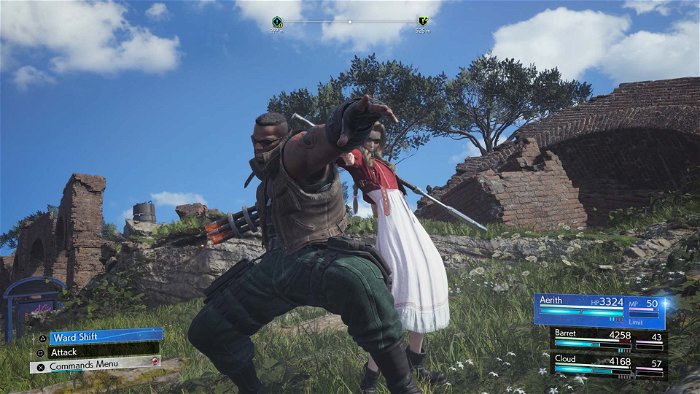
On the other side of its story, I’m floored by all I experienced within Final Fantasy VII Rebirth. It’s a feast for the senses and the heartstrings, with a truly vast amount of gameplay that manages to stay fresh throughout its long running time. This will prove subjective, but as a longtime fan of the franchise who has taken the original game apart repeatedly, I can’t imagine being much happier with this remake. Sure, I might’ve done a few story beats differently, but they were minor hiccups in a tremendous whole, and the gameplay proved just as broad and engaging as the story itself.
Final Fantasy VII Rebirth makes good on the promises laid out by Remake four years ago, honours the original game that inspired them both and sets the stage for a captivating third act that can’t arrive soon enough.






